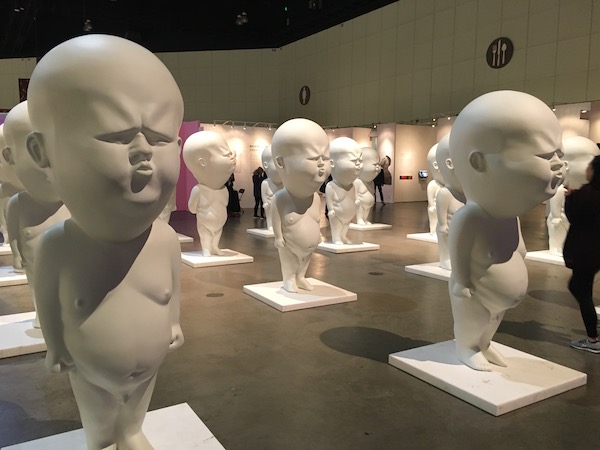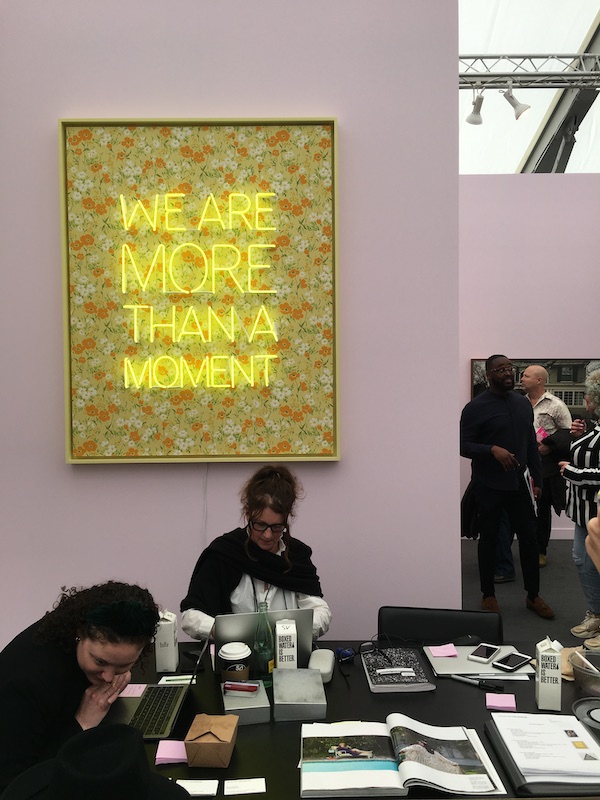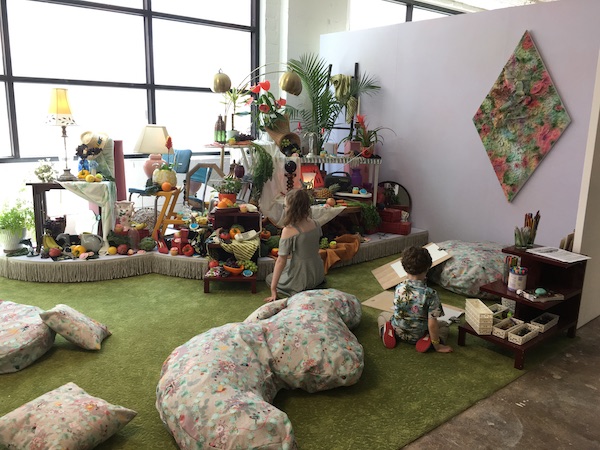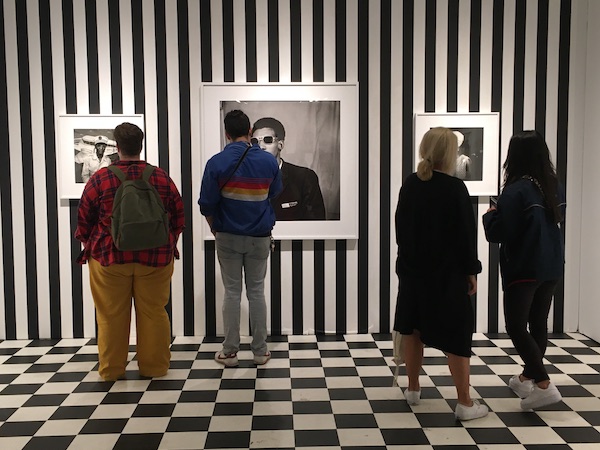Over the 25 years of the LA Art Show, Executive Director Kim Martindale has seen fairs come and go in Los Angeles, lost in the quicksand of art market trends. The past two years, however, have seen several new fairs establish themselves in LA – from small satellite shows to the international juggernaut of Frieze.

LA Art Show installation.
February yielded seven art fairs in two weeks, a continuous visual feast that orbited around the frenzy of Frieze’s second LA edition in Hollywood. Several of the smaller fairs – Felix, SPRING/BREAK, and Superfine! – are also on their second editions in 2020. stARTup has been around for five years and Art Los Angeles Contemporary (ALAC) has showed for over a decade. The mix of old hat and new hype begs the question: is this a sign of a moment, or a more permanent movement?
Given LA’s established base of local artists and collectors, as well as its convenient proximity to the Pacific Rim and ever-growing Asian art market, Martindale believes that the fairs are here to stay. “I believe strongly in Los Angeles,” he says. “It has the potential to overtake New York as the arts capital of its time.”

Tara de la Garza booth at SPRING/BREAK.
Tim Fleming, Owner & Director of ALAC, is of the same mindset. Like Martindale, Fleming cites the well-established history of collectors and artists in LA, as well as the strong gallery scene. “The idea of LA being undiscovered is silly,” Fleming says. “We know it’s cool.”
The non-LA-based newcomers are starting to catch on, too: co-founder of Superfine! Alex Mitow calls LA “one of the least-tapped art markets in the world, for its size.” As national brands with fairs in several cities, Superfine! and stARTup are drawn by the level of general art interest in LA. stARTup’s founder Ray Beldner sees “a lot more openness to new ideas…and a lot of creative people.” As both fairs aim to create accessible events for early-career artists and collectors, their presence indicates LA’s friendliness to multiple levels of the art world. Serving a range of economic audiences with overlapping interests bolsters the fair scene’s momentum further.

Frieze Los Angeles.
“I think it’s a moment and it’s a recognition – the moment comes out of the recognition,” says Andrew Gori, co-founder of SPRING/BREAK, which originated in New York. “With globalization and social media, you don’t have to be in New York if you want to do art in America. LA has always had incredible artists…now the infrastructure is building around that.” Felix co-founder Mills Moràn says, “The appetite was always there; we just didn’t have the right product to offer people.”

SPRING/BREAK.
Frieze Los Angeles has made a significant difference to that product offering, not least due to its size and established credentials, which provide enough pull to empower smaller fairs to orbit it. If it’s not quite the symbiotic ideal of mutualism, it’s at least a commensal relationship. Executive Director Bettina Korek calls Frieze “an access point” to the city, noting that the fair’s location at Paramount Studios “is very literally bringing the art and entertainment worlds together.” (Speaking of symbiotic relationships.)

Frieze Los Angeles backlot.
The February fairs reveal that the gap between how the art world views LA and how LA views itself is rapidly closing. Locals know that LA’s art scene is nothing new. But the international recognition of the city as a place to be and to buy, rather than simply a source of art, is a shift.
This year Superfine! chose to satellite to the LA Art Show, hoping to capture more attention than by competing with Frieze. However, the LA Art Show has announced that in 2021 they will move to the same weekend as Frieze, having already scooted closer from their January dates in prior years. With the city’s critical mass of art condensed over an even shorter period, some fairs may suffer in attendance. However, their overall momentum seems to be coalescing from a moment into a movement. As ALAC’s Tim Fleming put it, “The story’s just now being written.”


